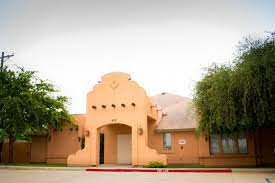Due to the placement of Laredo, Texas, on the Mexico border, the city is battling with a major influx of drugs- particularly Heroin, Meth, and Cocaine. To offset this increase in substance availability, Laredo offers multiple substance abuse treatment centers and support groups in the city.
Drug And Alcohol Abuse Trends In Laredo, Texas
Contents
Laredo, Texas, is a city located along the Mexico-Texas border in Webb County and has a population of approximately 259,151 people. The South Texas border area is currently the principle drug smuggling corridor between the United States and Mexico, particularly for that of Heroin, Meth, and Cocaine. Heroin is the leading cause of overdose in Laredo, as the substance is easily accessible and often of increased purity when close to the border. Additionally, alcohol is the most widely abused substance in Laredo and alcohol use disorders (AUD) have been steadily rising over the past decade due to high unemployment rates.
The Alcohol, Tobacco, and Other Drugs (ATOD) Education provides general information about substance use disorders (SUD) to individuals who want to reevaluate the role substances play in their daily lives. For those struggling with a SUD, there are treatment options available in Laredo, however, some individual may opt to explore other options in the surrounding area.
The Opioid Epidemic In Laredo

In 2018, there were 1,402 Opioid-related deaths in Texas. The CDC reports that Webb County drug-related mortality and abuse rates have more than doubled in the 10 year period between 2007 and 2017. While both prescription pain medications and illicit Opiates pose a threat to the state, Mexican Black Tar Heroin is the drug of choice for cities located on the border. The street-market price for Black Tar Heroin is around only $80 a gram in Laredo, while it sells for as much as $250 a gram in other parts of the country. Indicators of deaths and poison center calls relating to Heroin-use in the city continue to rise, but seizures of the drug by border control has decreased by almost 10%.
Opioid abuse is particularly affecting Laredo’s youth population, as many middle school aged adolescents are becoming addicted to prescription pain pills such as Hydrocodone. For many, it begins with an injury and a doctor’s recommendation for pain management that then escalates into a physical dependency. Prescription Opioid misuse is also a common gateway for the use of stronger drugs; 80% of current Heroin addicts first started abusing pain medications.
We are seeing a big problem with the misuse of prescription medication in our community. In Webb County, the average youth begins using prescription drugs for recreational purposes at 13.
To combat Opioid medication abuse, the DEA and local officials are partnering up for the National Prescription Drug Take Back, an initiative that allows the public to properly dispose of expired, unused, or unwanted prescriptions. Additionally, schools are implementing Opioid education programs to increase awareness of the dangers of prescription drug misuse.
Prevalence Of Alcohol Abuse
During the year of 2016, 27% of all clients admitted to publicly funded treatment programs had a primary problem with alcohol. Alcohol is one of the most accessible drugs, especially for underage and high school aged adolescents. In 2016, more than 50% of Webb County high school students admitted to using alcohol; 23% reported using it at least once in the past month. Of particular concern is heavy consumption of alcohol or binge drinking, as 9% of all Texan secondary students said that when they drank, they usually drank 5 or more beers at one time.
Laredo additionally suffers from one of the highest DUI rates in the state. The city had a total of 129 DUI-related crashes resulting in 2 fatalities in 2015 alone. In an attempt to reduce alcohol-impaired driving, Laredo has implemented a variety of security regulations, including: sobriety checkpoints, an increase in alcohol taxes, and ignition breathalyzer locks for drivers with convictions of driving under the influence.
Drug Trafficking Across The Border
Located in the southern region of Texas just across the border from the Mexican town of Nuevo Laredo, Laredo has been greatly affected by an increase in drug trafficking. The amount of illicit drugs flowing into the country from this area is extremely high and includes substances such as Marijuana, Heroin, Cocaine, and Methamphetamine. The Laredo port of export is the busiest commercial export port in North America and, as a result, has been the focal point of many violent conflicts between competing Mexican drug trafficking organizations.
Accordingly, the highest levels of illicit drug abuse in the South Texas Border area occur in the most heavily populated cities in the area, like Laredo. A 2016 survey conducted by the Texas Department of State Health Services (DSHS) revealed higher levels of powder Cocaine and Crack Cocaine use among students along the U.S.-Mexico border in Texas than among students who live in non-border areas. For example, 20% of high school seniors along the border reported previous cocaine use, compared to only 11% of students in non-border areas.
Finding Treatment In Laredo
If you’re a resident of Laredo struggling with addiction, there are 10 treatment facilities in the city that specialize in the rehabilitation of those suffering from a SUD. Additionally, there are thousands more rehab centers throughout the state of Texas and the nation that offer recovery services. For more information about your specific options, contact a treatment provider today.

